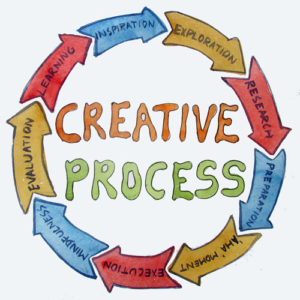“From Concept to Creation: The Process of Making Artwork”
Art, in its myriad forms, serves as a testament to human creativity and expression. Behind every captivating piece of artwork lies a process that transforms imagination into tangible form. This article delves into the intricate journey from concept to creation, providing insights into the steps artists take to bring their visions to life.
1. **Inspiration and Conceptualization:**
The artistic process begins with inspiration—an idea, emotion, or concept that sparks the creative journey. Artists draw inspiration from various sources, such as personal experiences, societal issues, nature, or even other works of art. During the conceptualization phase, artists refine their ideas, forming a clear vision of the message or aesthetic they want to convey.
2. **Research and Development:**
Depending on the nature of the artwork, artists may engage in research to deepen their understanding of the subject matter. This phase involves gathering references, exploring different artistic styles, and experimenting with various techniques. Research and development provide a foundation for the artist to make informed decisions about composition, color palette, and overall design.
3. **Sketching and Planning:**
With a solid concept in mind, artists often begin by sketching their ideas on paper or digitally. These initial sketches serve as blueprints for the artwork, allowing artists to experiment with compositions, shapes, and proportions. Planning becomes crucial in larger or more complex pieces, guiding the artist through the subsequent stages of creation.
4. **Choice of Medium and Materials:**
Artists choose their medium and materials based on the desired outcome of the artwork. Whether working with traditional materials like oil paints, watercolors, or graphite, or exploring digital mediums, the selection influences the texture, color intensity, and overall appearance of the final piece. Each medium presents unique challenges and possibilities, contributing to the artistic process.
5. **Creation and Execution:**
The creation phase involves bringing the artwork to life. Artists translate their sketches into the chosen medium, layering colors, refining details, and adding depth to the composition. This stage requires a combination of technical skill, intuition, and the ability to adapt as the artwork evolves. The artist may encounter challenges and unexpected opportunities during the execution process.
6. **Reflection and Iteration:**
As the artwork takes shape, artists engage in a continuous process of reflection and iteration. They step back to assess the work, seeking coherence with the initial concept and making adjustments as needed. This reflective practice allows artists to refine their techniques, enhance elements of the composition, and ensure the alignment of the artwork with their original vision.
7. **Finishing Touches and Presentation:**
The final stages involve adding finishing touches to the artwork, refining details, and ensuring a cohesive visual narrative. Artists may consider framing, mounting, or presenting the work in a specific manner that enhances its impact. Presentation choices contribute to the overall aesthetic and influence how viewers engage with the artwork.
8. **Sharing and Feedback:**
Once the artwork is complete, artists often share it with others, whether through exhibitions, online platforms, or social media. Feedback from peers, critics, and the audience can provide valuable insights and contribute to the artist’s growth. The sharing process also marks the culmination of the artistic journey, as the artwork finds its place in the broader creative conversation.
Conclusion:
The process of making artwork is a dynamic and personal journey, guided by creativity, skill, and a commitment to self-expression. From the initial spark of inspiration to the final strokes of the brush or clicks of the mouse, artists navigate a series of intentional steps to turn abstract concepts into tangible, evocative works of art. Through this intricate process, artists contribute to the rich tapestry of human creativity, inviting viewers to explore, interpret, and connect with the stories embedded in each piece.





Post Comment